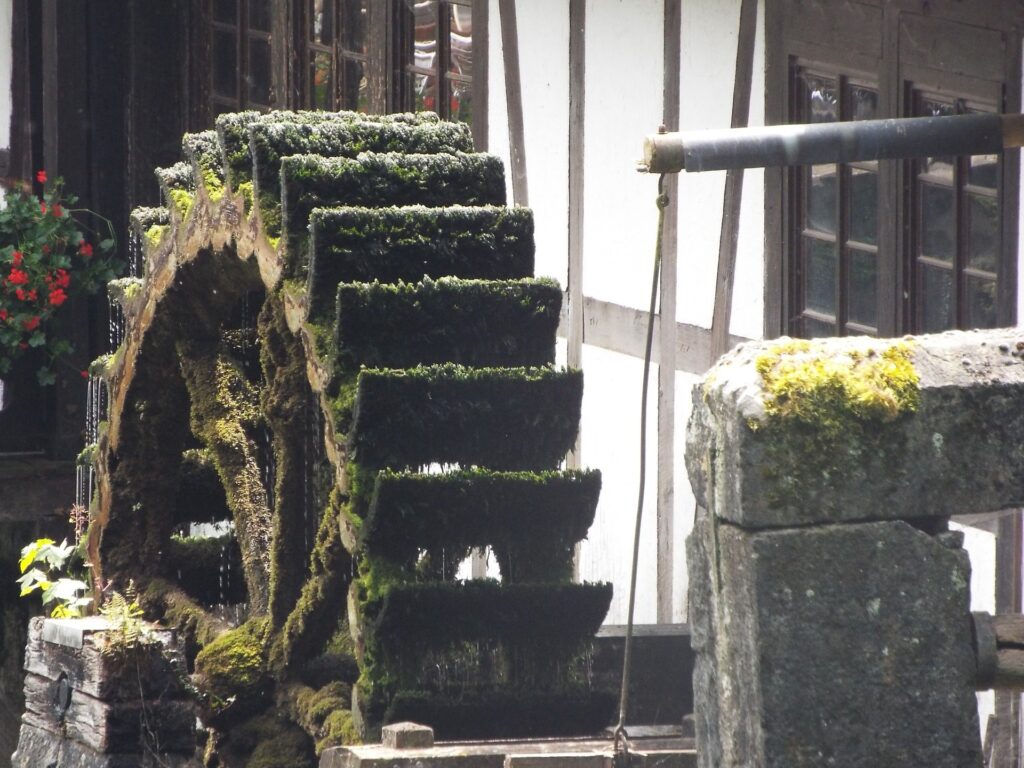Two are better! Whether or not Edward Starbuck built all the mills he was given permission to erect is difficult to say, but any he did build likely had an impact on Dover’s economy.

Previously…
Edward Starbuck and Hatevil Nutter were given permission to build sawmills on the Lamprey River in 1649.[1] There was nothing in the town records in 1649 or for years afterwards that indicated these specific mills were built, though there’s no reason to believe a lack of notation means they weren’t.
New Sawmill
In 1650 Edward entered into another sawmill agreement, this time with Thomas Wiggins.[2] The location they were granted by the town of Dover was on the Cocheco River, which bordered the north of Dover Neck and flowed into the Piscataqua. They were also to have an “accommodation” of timber on land near the sawmill which could later be expanded.[3] In return, Thomas Wiggin and Edward Starbuck were to pay the town of Dover £10 per year starting a year after the sawmill was completed. If they defaulted, either by not finishing or by walking away from the project, they were to pay the £10 to Dover anyway in 1651. In return they were also guaranteed some exclusivity: no-one was allowed to build a sawmill above theirs on the Cochecho. Additionally, Thomas Wiggin got 100 acres of upland adjacent to the mill and Edward got 50 acres nearby. The surviving remains of another document indicates Edward and Thomas’s rent on the sawmill was to begin the first of July 1651.
More to saw
Another town record written in 1652 stated Edward and others who had built sawmills were to get additional accommodations of timber.[4] Those who entered into the agreement promised to be content with what they got, so there would be no quibbling over the arrangement. In addition to Edward, the men named were Simon Bradstreet, Thomas Wiggin, Valentine Hill, Richard Waldron, and Joseph Austen. Building sawmills on the rivers around Dover was definitely a going concern.
By the end of 1652 Edward and Thomas Wiggins were granted yet another section of forest to use.[5] This time the stipulation was that they had to allow Dover inhabitants to also harvest some trees. The agreement also singled out mast-sized trees, specifically those twenty-four inches or more in diameter. Any trees that size required Edward and Thomas to pay ten shillings to Dover. The Selectmen of Dover knew masts were in demand and by granting Edward and Thomas a bit more forest they could also negotiate for some of the profits of what appeared to be one of their best sources of export income. The singling out of the mast timbers, though they were being taxed, also indicated permission had been granted to cut such trees, preventing a repeat of the 1649 Thompson’s Point kerfuffle.
[1] “Rockingham County, New Hampshire deeds,” database, Ava (www.ava.fidlar.com : accessed 9 June 2022), Edward Starbuck. 11 Sep 1647.
[2] Dover, New Hampshire, Town Records 1647-1753; digitized images, City of Dover, New Hampshire (https://www.dover.nh.gov/government/city-operations/finance/city-clerk-tax-collection/historic-dover-records/ : accessed 10 August 2021), 15.
[3] Presumably this was permission to cut timber from acreage near the mill.
[4] Dover, New Hampshire, Town Records 1647-1753; digitized images, City of Dover, NH (https://www.dover.nh.gov/government/city-operations/finance/city-clerk-tax-collection/historic-dover-records/ : accessed 10 August 2021), 21.
[5] Dover, New Hampshire, Town Records 1647-1753; digitized images, City of Dover, NH (https://www.dover.nh.gov/government/city-operations/finance/city-clerk-tax-collection/historic-dover-records/ : accessed 10 August 2021), 29 part 1, part 2.
